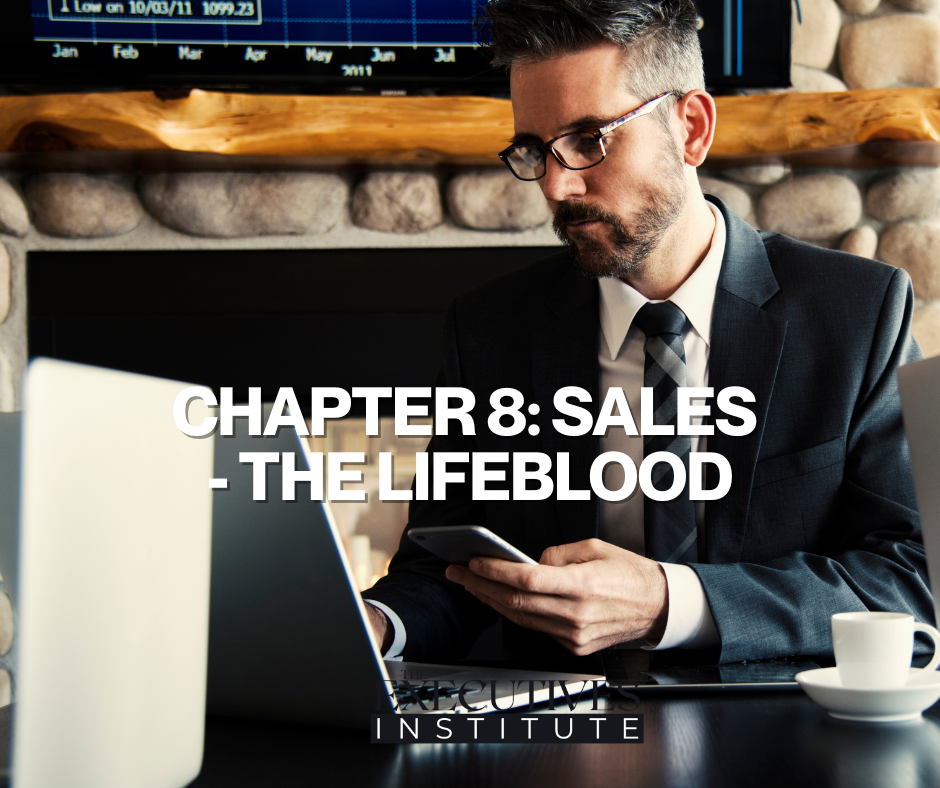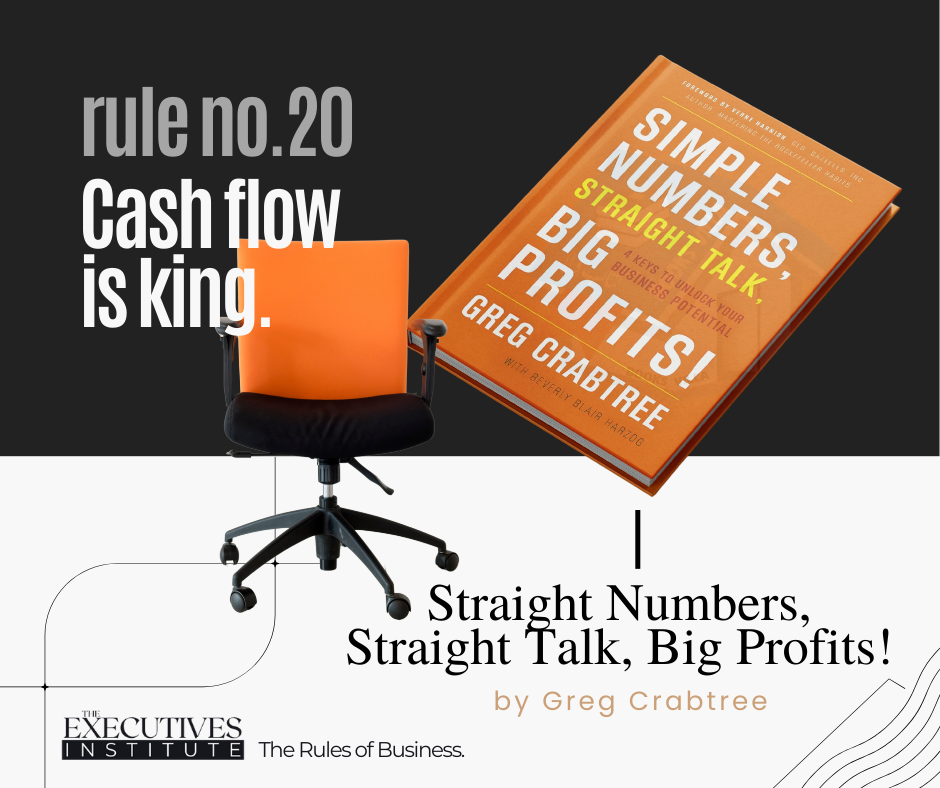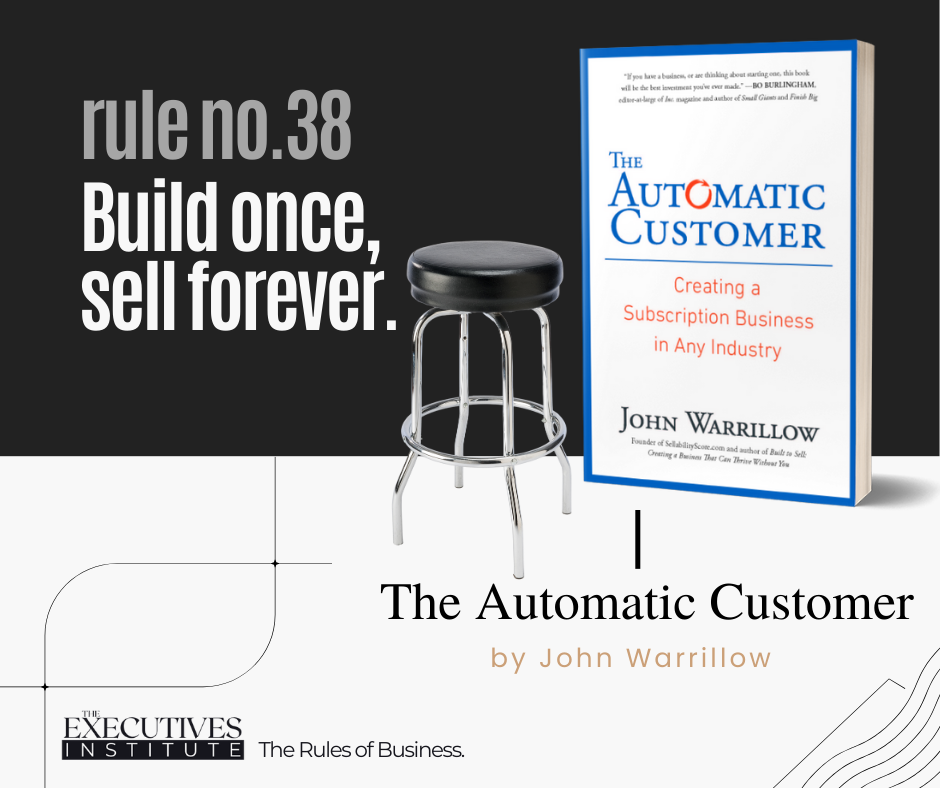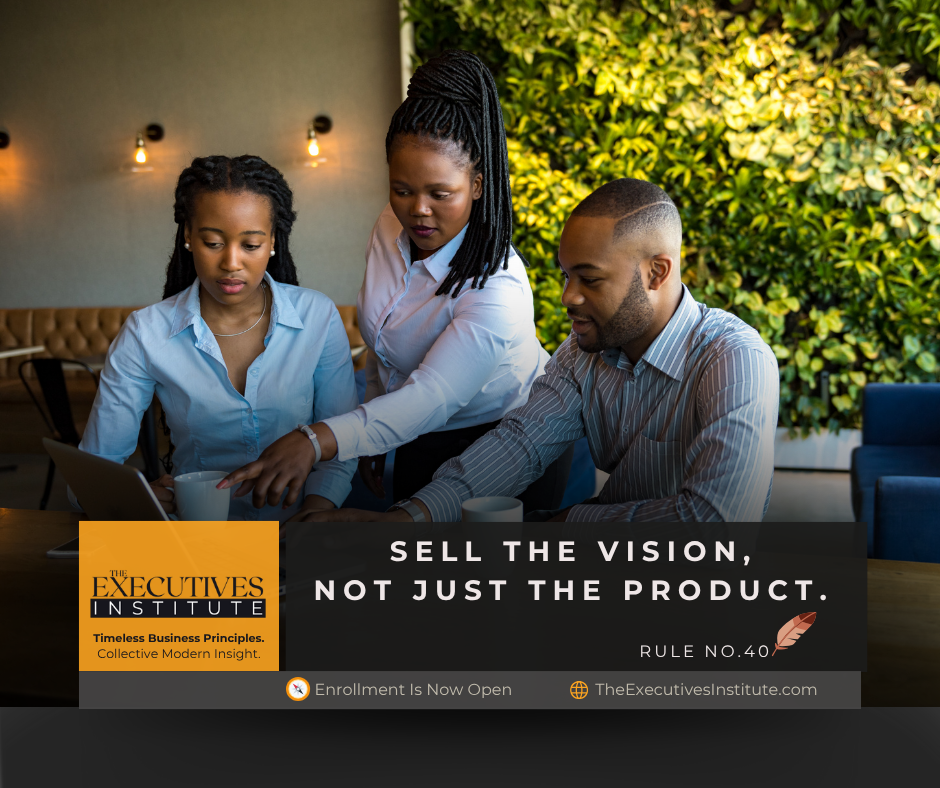
Revenue doesn’t solve everything—but without it, nothing gets solved.
Sales isn’t just a department—it’s the engine that drives your entire business forward. Without revenue, even the best product, team, or strategy will stall. This chapter is about building a sales foundation that lasts—one rooted in real value, clear numbers, and a story worth buying into.
Are we selling something people believe in—or just something we hope they’ll buy?
You’ll get clear on what drives profitability, why cash flow is the true pulse of your business, and how to build once and sell again and again. But this isn’t about tactics. It’s about mindset. Great salespeople don’t just pitch—they lead. They cast a vision. They move people.
If you want staying power, you need more than a great offer. You need a machine that knows its numbers, protects its margins, and sells something bigger than a product. Let’s build that now.
Chapter 8, Sales—the Lifeblood, features the following 4 fundamental Rules:
- WEEK 32— Rule No. 13: Know your numbers.
- WEEK 33— Rule No. 20: Cash flow is king.
- WEEK 34— Rule No. 38: Build once, sell forever.
- WEEK 35— Rule No. 40: Sell the vision, not just the product.
WEEK 32
Rule No. 13: Know your numbers.
Why: Because if you can’t read a P&L, you’re guessing.

Rule No. 13 SUMMARY ![]()
If you don’t understand the numbers, you don’t understand the business. Knowing your financials isn’t just for accountants—it’s essential for every leader who wants to make smart decisions, allocate resources wisely, and build a business that lasts.
Ask Yourself: Which number in my business is most misunderstood, ignored, or misinterpreted—and what would I do differently if I truly understood it?
WEEK 32 Action Step: This week, take 30–60 minutes to pull the three key financial statements for your business: Income Statement, Balance Sheet, and Cash Flow Statement. Review them line by line and identify:
- One metric that surprises you.
- One area where the numbers tell a different story than your intuition.
- One immediate action you can take based on what you learn.
Don’t delegate this—look at the numbers yourself. Understanding them is your responsibility.

WEEK 32 RECOMMENDED READING: Financial Intelligence by Karen Berman & Joe Knight
“Numbers don’t lie. But people who don’t understand numbers do.”
— Karen Berman, Financial Intelligence
WEEK 33
Rule No. 20: Cash flow is king.
Why: Because revenue buys time and options.

Rule No. 20 SUMMARY ![]()
Forget vanity metrics. Forget top-line revenue. If your business doesn’t produce consistent, positive cash flow, it’s not healthy — it’s just temporarily surviving. This rule reminds us that cash is not just a financial metric; it’s the oxygen of a business. You can’t grow, pay your people, or weather a storm without it. Mastering cash flow isn’t an accounting detail — it’s leadership.
Ask Yourself: If all revenue stopped tomorrow, how long could my business operate without compromising employees, vendors, or commitments — and what would I need to change today to extend that runway?
This forces real, practical reflection — not just theoretical accounting.
WEEK 33 Action Step: Review your cash flow statement this week and identify the top three areas where cash is leaking or could be optimized. Examples include slow-paying clients, excessive inventory, or recurring nonessential expenses. Then, implement one immediate change to protect or accelerate cash — even if it’s small.

WEEK 33 RECOMMENDED READING: Simple Numbers, Straight Talk, Big Profits! by Greg Crabtree
“Profit is a theory. Cash is a fact.”
– Greg Crabtree, Simple Numbers, Straight Talk, Big Profits
WEEK 34
Rule No. 38: Build once, sell forever.
Why: Because recurring revenue stabilizes growth.

Rule No. 38 SUMMARY ![]()
Most businesses are built on a treadmill—sell, deliver, repeat. This rule flips that model. Instead of chasing the next transaction, you design something once that can be sold repeatedly with minimal friction. It’s about creating scalable value that generates recurring revenue while freeing your time and multiplying your enterprise value. This isn’t theory—it’s the backbone of resilient, modern business models.
Ask Yourself: What could I build once this week that will continue to generate value—and revenue—without me showing up every single day?
WEEK 34 Action Step: Identify one product, service, or process in your business that could be transformed into a recurring or repeatable model. Map out the steps required to make it deliverable automatically—whether through a subscription, membership, licensing, or packaged solution. Commit to taking at least one concrete step this week toward systematizing it.

WEEK 34 RECOMMENDED READING: The Automatic Customer by John Warrillow
“The more your revenue depends on you showing up to work every day, the less valuable your business is.”
— John Warrillow, The Automatic Customer
WEEK 35
Rule No. 40: Sell the vision, not just the product.
Why: Because vision inspires loyalty.

Rule No. 40 SUMMARY ![]()
Don’t just push features — inspire belief. Customers don’t buy what you do; they buy why you do it. Great companies lead with purpose. When you sell the vision behind your product, you attract loyalty, not just transactions. Without a clearly communicated “why,” even the best offerings get lost in the noise.
Ask Yourself: Am I selling what we do, or the belief behind what we do? When a customer walks away, do they understand why we exist — or just what we sell?
WEEK 35 Action Step: Craft your “why statement.” Sit down this week and write a concise, compelling statement that explains why your business exists beyond making money. Share it with your team and ask for feedback — refine it until it resonates clearly and naturally. Then, identify one customer-facing touchpoint (website, pitch, email, or presentation) where you can lead with that “why” instead of your features or specs.

WEEK 35 RECOMMENDED READING: Start with Why by Simon Sinek
“People don’t buy what you do; they buy why you do it.”
— Simon Sinek, Start With Why
Chapter 8 complete – congratulations! You’ve Built More Than a Sale—You’ve Built Momentum
You’ve done more than sharpen your pitch or tighten your pricing. You’ve laid the groundwork for revenue that’s reliable, meaningful, and scalable. You’ve shifted from chasing quick wins to building long-term value—knowing your numbers, managing your cash, and selling something bigger than just a product. That’s the heartbeat of a business built to last.
Now it’s time to shift from what drives your business to what holds it together.
Next up: Chapter 9 — Culture You Can Count On.
Culture isn’t what you say—it’s what you tolerate, reward, and repeat.
If strategy sets the direction, culture sets the tone. It shapes behavior, decision-making, and performance—especially when no one’s watching. In the next chapter, we’ll raise the bar on what your company stands for, how it shows up, and how to build a culture strong enough to scale. VISIT CHAPTER 9
